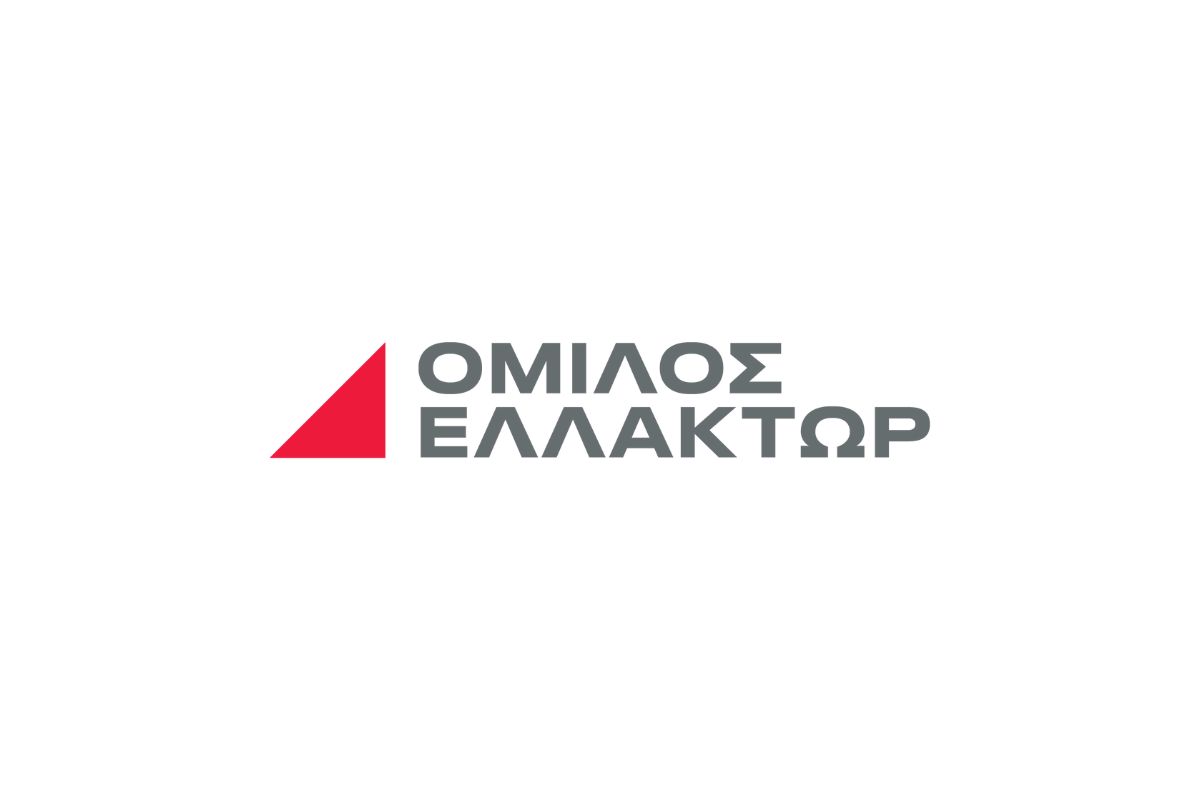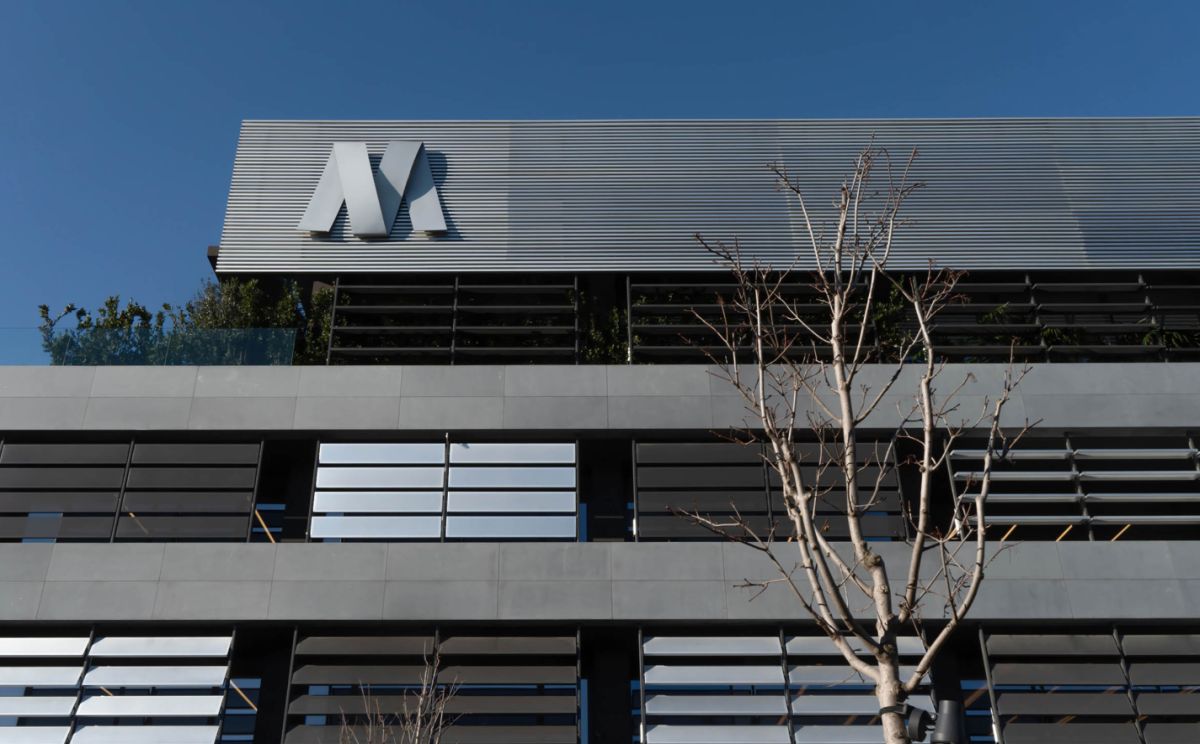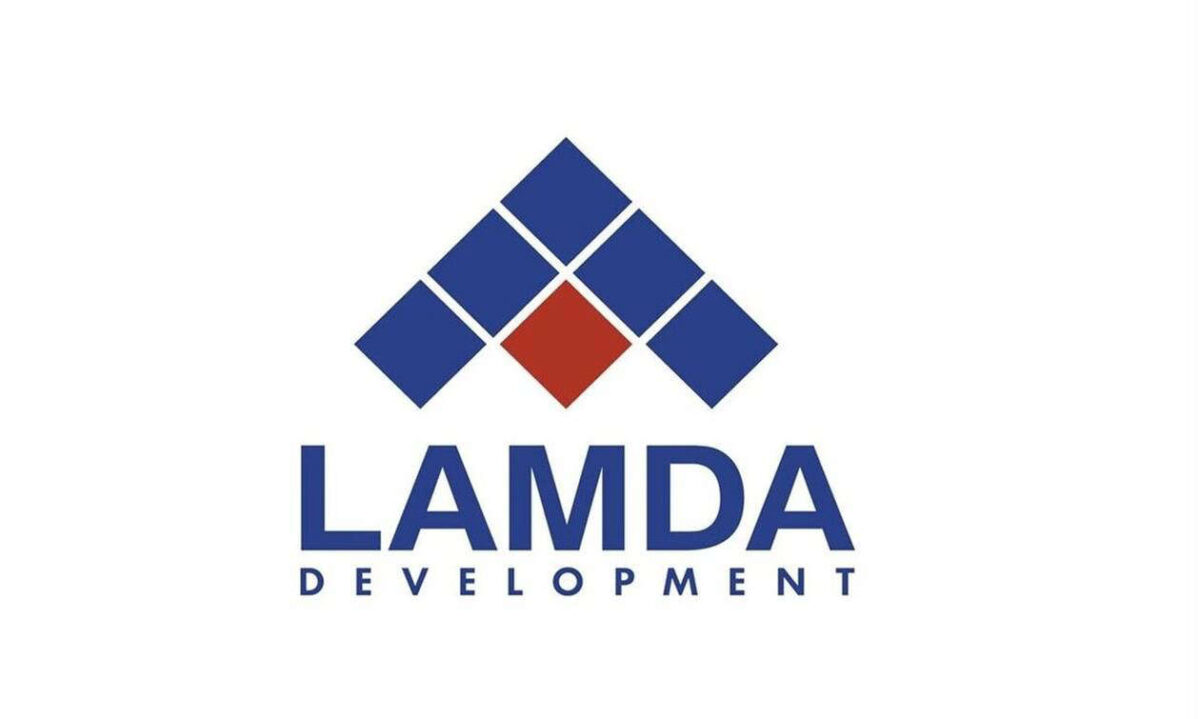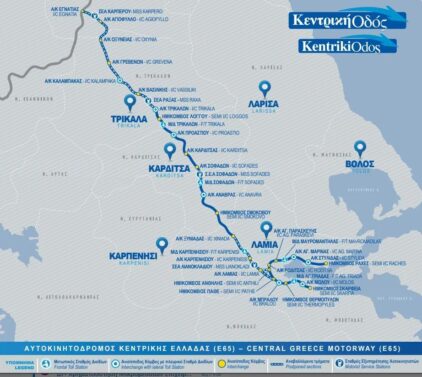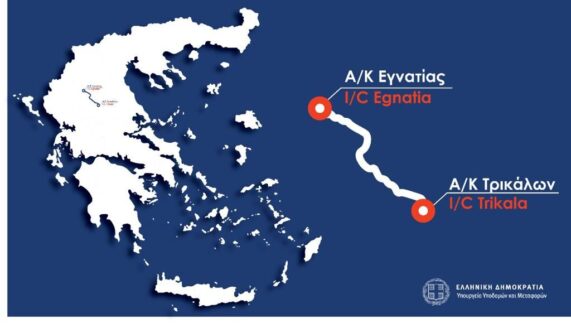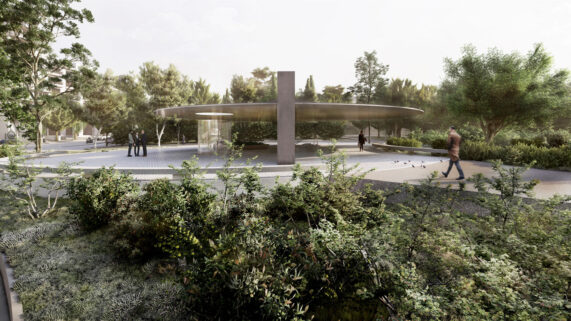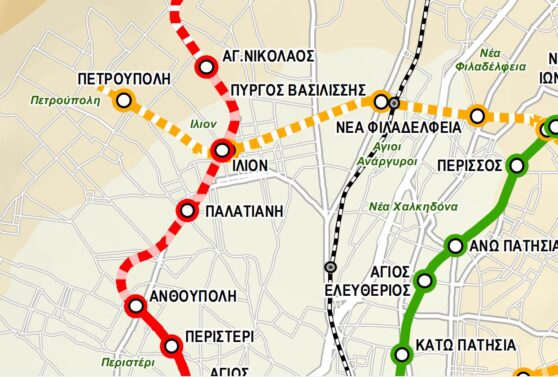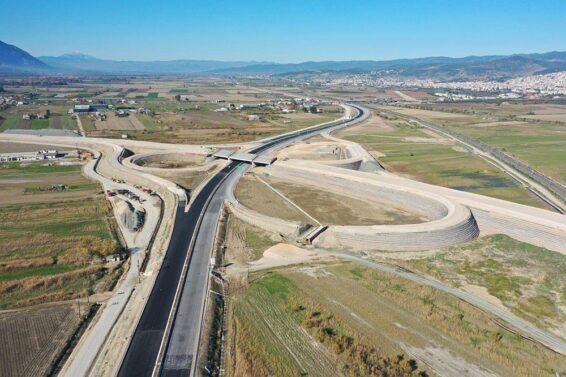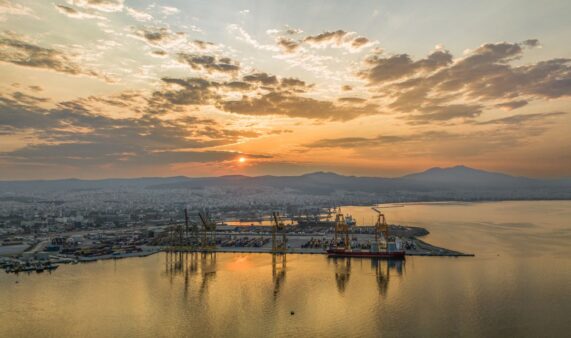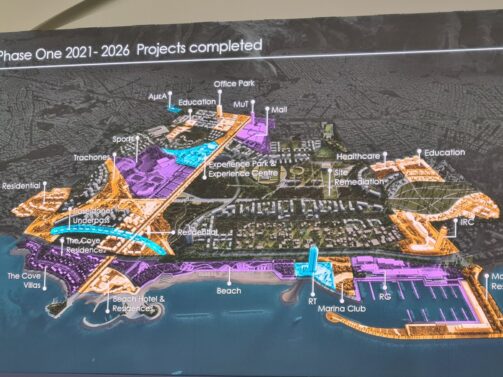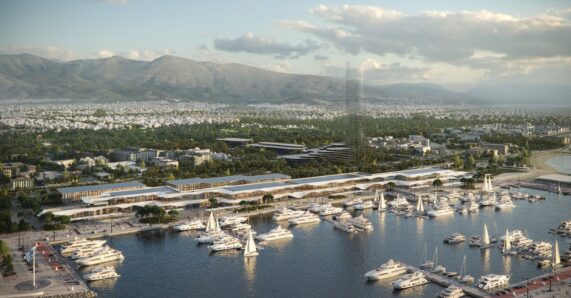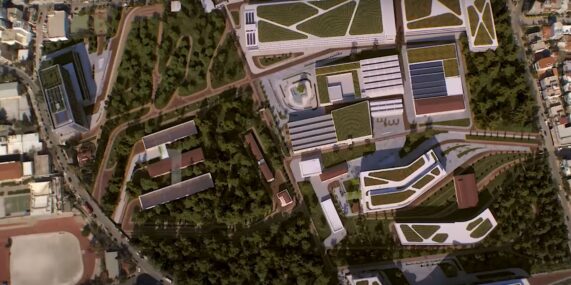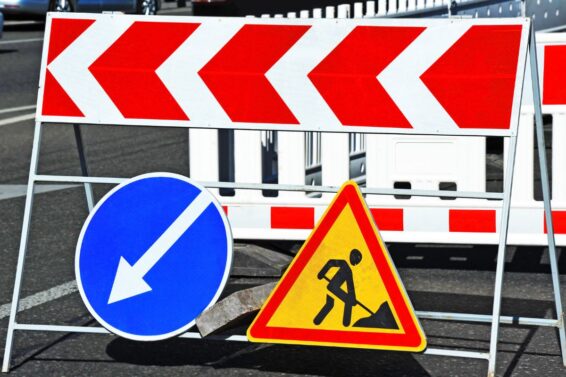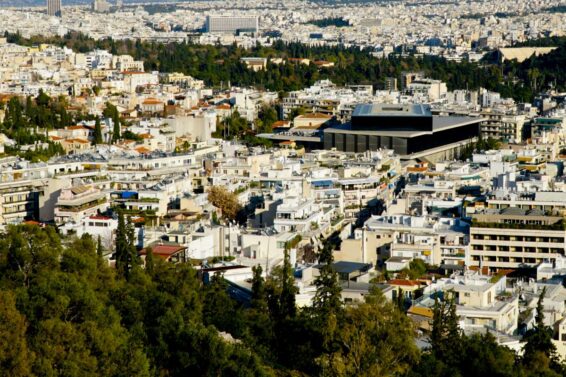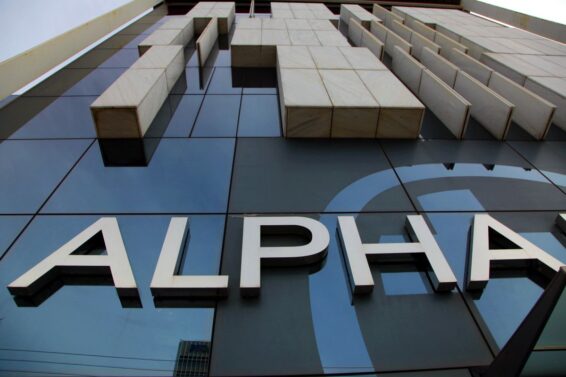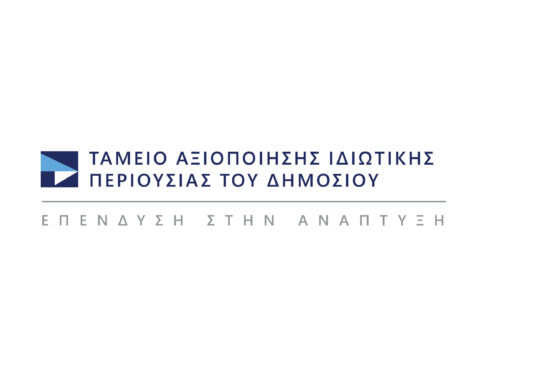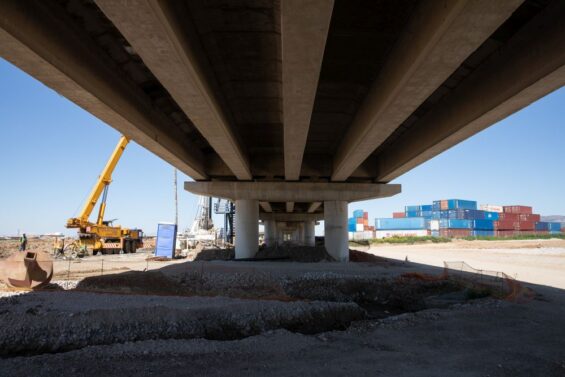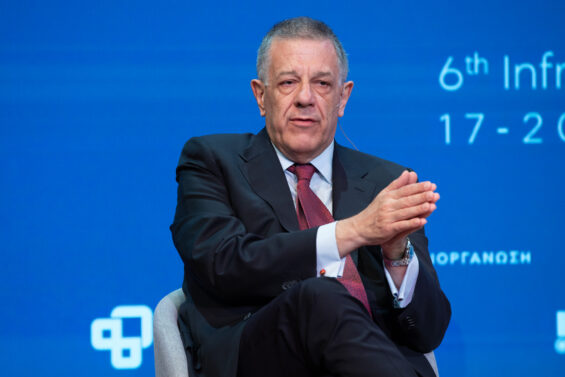It is estimated that the long-awaited undergrounding project of Line 1 of the Metro from Faliro to Piraeus will be able to be auctioned at the end of 2021.
According to information from ypodomes.com, what needs to be done is to update the existing study and secure funding. The same sources state that the completion of the study as soon as possible is being considered, leaving open the possibility of even making it as a donation (a practice that we have seen several times in recent years in order to save time).
The project includes the sinking of the lines immediately after the exit from FALIRO station, the creation of a new underground station called KAMINIA and the rise of the lines to the surface at the PIRAEUS terminal. Upon completion, the trains will move comfortably and at Metro speeds. Today the lines in this section are on wooden sleepers which limits the speed of the trains.
The project, as noted by sources very close to the issue, has received the green light from both the Maximou Palace and the Minister of Infrastructure, Costas Karamanlis, and we are now in the planning phase of the implementation of the important for Piraeus and the Metro network work.
The key elements for the project
The update of the study is now considered necessary as the data from the time it was prepared are sufficient. According to secure information, three main issues are being considered:
1. The necessity of KAMINIA station. This intermediate station is located at the entrance of Piraeus (34th Syntagma and Omiridou Skylitsis Street) and right in front of the old factory of Keranis. The utility will be reviewed both in terms of transport (population density of area, transport project, etc.) and costs in order for the project to be able to be financed.
2. According to the old study, over the underground part of the line, the tram lines would move in parallel as in the post-Olympic era there was the thought of two parallel works. Now this is not possible as the Tram project has already been completed and is located on both sides of the lines but it would also result in the re-interruption of the Tram line (which incidentally has not yet worked).
In addition, it is known that the Municipality of Piraeus eagerly wants the undergrounding of the lines so that the parallel axes (Mikras Asias and Omiridou Skylitsi) can be widened and an avenue capable of withstanding the traffic load to the port of Piraeus can be created.
3. In STASY there is a desire for the undergrounding project to coincide in time with the renovation / upgrade project of the repair base of the line as the project of the second one would require closing the lines anyway since it is located next to and above them. The project of TEB Piraeus is intended for implementation as a PPP project and therefore there should be some joint planning so that the Piraeus station does not remain closed for more time than the planned time of the undergrounding projects.
The projects, after the operation of the extension of line 3 in Piraeus
In addition, the ideal scenario would be for the undergrounding project to start after the operation of the PIRAEUS station in the context of the extension of line 3 to the Municipal Theater of Piraeus in order for the port of Piraeus not to lose the valuable connection to the Metro network of the city.
The estimation of the cost of the undergrounding project from Faliro to Piraeus is amounted at 100 million euros. Now the plan for its financing is to join the NSRF 2021-2027 or the Recovery Fund (with the former as the favorite). From sources close to the issue, it is considered that there will be no problem with the financing of the project since it is a “green project”. Although there has been an attempt to join the NSRF 2014-2020, there is no longer the necessary time since we are now heading towards the end of the current programming period.
A project with history
The project has a history of decades, but after the 2004 Olympic Games it began to become more mature. Initially as a double project together with the extension of the Tram to Piraeus. Eventually, due to reactions, the Tram changed its layout and was auctioned on its own (this is the project that is expected to be delivered in early 2021). In November 2009 the preliminary design was approved and in November 2012 the AEPO was approved, i.e. the environmental conditions of the project. In March 2013, a request was submitted by STASY for approval of the final study.
Then we had a setback and the then administration decided to terminate the preliminary design contract and in 2017 the decision was revoked and the project returned to the agenda.
The approved environmental conditions are the big weapon of the project that theoretically can soon, as soon as it joins the NSRF, send the project to implementation, satisfying a request of decades for Piraeus that will stop being informally divided.
ΜΗΝ ΞΕΧΑΣΕΤΕ
- Ακολουθήστε το ypodomes.com στο Google News και μάθετε πρώτοι όλες τις ειδήσεις για τις υποδομές στην Ελλάδα
- Αν είστε επαγγελματίας του κλάδου, ακολουθήστε μας στο LinkedIn
- Εγγραφείτε στο Ypodomes Web TV

